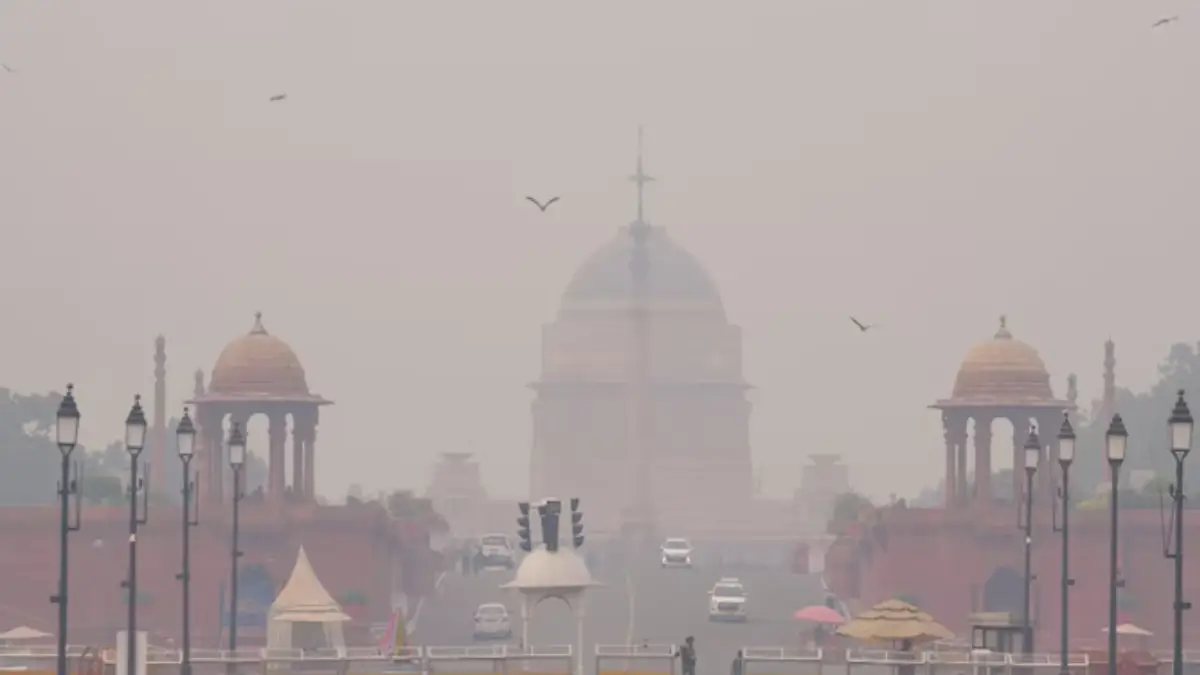New Delhi: For the first time this year, Delhi’s air quality deteriorated into the ‘severe’ category on Tuesday, marking the capital’s poorest air day in almost 11 months and prompting authorities to activate Stage III measures under the Graded Response Action Plan (GRAP) throughout the National Capital Region (NCR).
The city’s 24-hour average Air Quality Index (AQI) reached 428 on a 0-500 scale, the highest since December 19 last year when it hit 451. The previous ‘severe’ reading occurred on December 23, 2024, at 406. This abrupt worsening from Monday’s 362 came as overnight calm winds and falling temperatures trapped pollutants close to the ground, enveloping the region in thick smog. Morning visibility plummeted to 600 meters at Safdarjung and 700 meters at Palam around 6:30 am.
Mahesh Palawat, vice-president at Skymet, explained that winds slowed significantly on Monday and remained nearly still overnight, combined with cooling temperatures, leading to heavy pollutant buildup. Winds strengthened to about 12 km/hr only after noon on Tuesday. Forecasts indicate sustained winds on Wednesday could bring slight relief.
ALSO READ : Delhi Bomb blast : Explosives colledted over 2 years multi-city strike says Shaheen
Invoked by the Commission for Air Quality Management (CAQM), GRAP Stage III applies to Delhi, Gurgaon, Faridabad, Ghaziabad, and Gautam Buddh Nagar. It prohibits most construction and demolition work, along with entry of BS-III petrol and BS-IV diesel four-wheelers—except for essential services. Non-essential diesel medium goods vehicles and BS-IV light commercial vehicles from outside Delhi are barred, as are certain older vehicles.
Delhi’s education directorate mandated hybrid learning for classes up to Grade V. CAQM urged Delhi and NCR governments, plus central offices in the region, to stagger work hours for employees to ease traffic. The commission stressed rigorous enforcement, with all prior GRAP stages remaining active.
Despite clearer skies later Tuesday and visibility rising to 2,000 meters, haze lingered. Safdarjung recorded a seasonal low minimum temperature of 10.2°C, four degrees below normal, with a high of 27.7°C.
Central Pollution Control Board (CPCB) data at 9 am showed 33 of 39 stations in ‘severe’ zone, with Bawana at 463 and Wazirpur at 460. Areas like Alipur, Burari, Chandni Chowk, ITO, and Jahangirpuri saw PM2.5 exceed 600 μg/m³ early on. Experts blamed meteorological inversion trapping emissions.
The Centre’s Air Quality Early Warning System predicts marginal improvement to ‘very poor’ on Wednesday, persisting through Friday. IMD anticipates shallow morning fog but winds up to 20 km/hr aiding dispersion.
